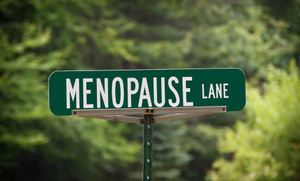A new study has shown that when you eat one piece of fried chicken per day, you risk “death by fried chicken”.
Details of a postmenopausal women study
This was a study by the same group that published the Women’s Health Initiative. Participants were asked whether they would take part in a dietary prospective study published in the British Medical Journal January 2019.
93,676 women were part of the study, and researchers observed them for an average of 17.9 years. There were 9,320 deaths from cardiovascular disease, 8,358 deaths from cancer, and 13,880 deaths from other causes.
Here are the results for all cause mortality
Total fried food consumption: 1% risk for less than 1 serving per week
3% risk for 2 to 3 servings per week
3% risk for 3 to 6 servings per week
8% risk for eating at least 1 serving per day
Fried chicken consumption: 6% risk for less than 2 servings per month
12% risk for 2 to 3 servings per month
13% risk for at least 1 serving per week
Fried fish/shellfish consumption: 7% risk for at least 1 serving per week
Risk factors for cardiovascular mortality
The following are the risk factors for cardiovascular mortality of the consumer of fried chicken or fish.
8% risk for less than 2 servings per month
17% risk for 2 to 3 servings per month
12% risk for at least 1 serving per week
Fried fish/shell fish consumption.: 13% risk for at least 1 serving per week
Cancer mortality from fried foods was not that clear. Here are two interesting statistics.
Cancer mortality for fried fish consumption
-8% risk for less than 3 servings per month.
Other fried food consumption:
+9% risk for less than 2 servings per month.
Discussion of the results
This has been an extensive prospective study involving a large amount of postmenopausal women from the Women’s Health Initiative. In addition the observation time was very long, namely an average of 17.9 years. These properties give the study an unusually strong statistical significance. The following features are noteworthy.
Comparing fried chicken with fried fish/shell fish
Fried chicken, prepared in the US in 40 different states has a risk of 17% to cause a heart attack or a stroke for persons that consume two or three servings per month.
Fried fish/shell fish only has a risk of 13% when eaten once per week of causing a heart attack or stroke.
Comparison between this study and a Spanish study
The authors discussed that their findings are different from a Spanish study that found no increased cardiovascular risk of deep fried chicken. They pointed out that in Spain the oil used for deep-frying is usually olive oil while in the US it is mostly corn oil. Frying causes the process of oxidation and hydrogenation, which leads to a loss of unsaturated fatty acids. Linoleic acid experiences a reduction and a corresponding trans fatty acid formation. The end result is that the concentration of trans linoleic acid increases. This may be an important factor increasing the risk of heart attacks and strokes in the US where the use of corn oil is common for deep-frying, but not in Spain where chefs use olive oil instead. Olive oil is a monounsaturated fatty acid and stable with cooking.
Comparison between fried fish consumption and other fried food
There was a less than average cancer risk (-8%) when fried fish consumption was compared to other fried food consumption. With other fried food consumption a +9% risk for cancer mortality was found. This is a spread of 17%. Frying fish, which contains omega-3 fatty acids may neutralize the cancer causing effect from frying other foods. Omega-3 fatty acids are natural anti-oxidants. This may be the reason why fried fish/shell fish did not cause excessive cancer deaths.
Other considerations
The authors did not delve into the quality of the chicken meat in the US fast food industry. It is known that chicken farmers use an arsenic compound (“3-nitro”) for faster growth and prevention of infections among crowded living conditions of the birds. 3-nitro is a carcinogen, which contributes to cancer toxicity in humans as non-organic chicken meat contains it.
It likely would be wiser to buy organic chicken and pan-fry it in olive oil. Alternatively you may want to BBQ chicken at a low temperature.
Conclusion
Buying deep fried chicken from a fast food outlet is a favorite for many Americans. This study shows clearly that it is deep fried chicken that causes the highest heart attack and stroke mortalities in the US. But “death by fried chicken” does not have to be. The problem may be that the kitchen used the wrong fats to prepare deep fried chicken. In a similar study in Spain there was no increase in cardiovascular risk when cooks used olive oil for deep-frying chicken.
Alternative to buying fast food
The small extra step of buying organic chicken and preparing it at home in a frying pen with olive oil will pay big health dividends. Similarly, fish and shellfish prepared in olive oil at home will also not have any risks for you. A lot of people rave about the convenience of buying deep fried food and in this case deep fried chicken. This article, however, shows that it is time that we take at least some control back in our own hands to prepare healthy food for our families and ourselves. It is a poor trade to choose convenience over health!








